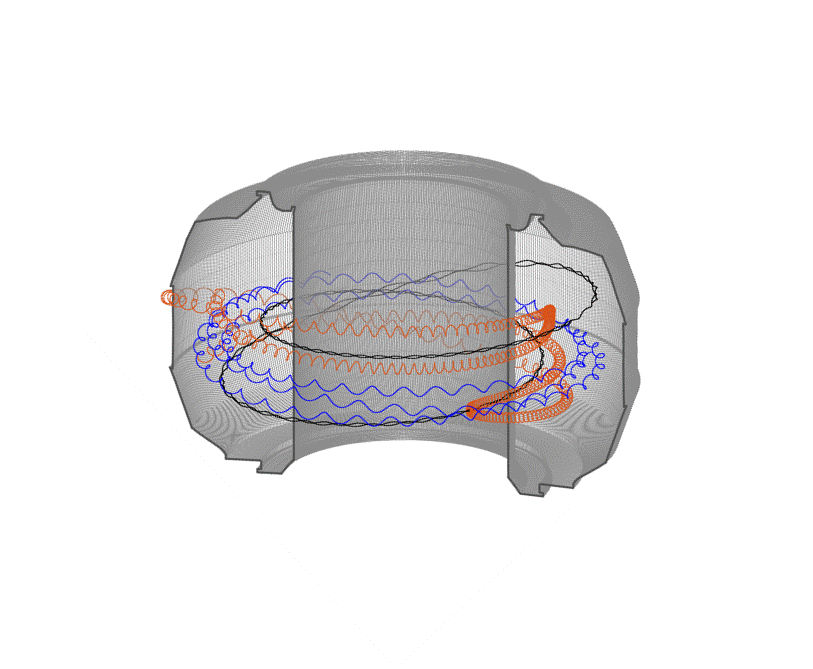
Filter News
Area of Research
- Advanced Manufacturing (5)
- Biological Systems (1)
- Biology and Environment (48)
- Clean Energy (70)
- Computational Biology (1)
- Computational Engineering (2)
- Computer Science (7)
- Electricity and Smart Grid (1)
- Energy Frontier Research Centers (1)
- Fuel Cycle Science and Technology (1)
- Fusion and Fission (16)
- Fusion Energy (6)
- Isotope Development and Production (1)
- Isotopes (18)
- Materials (60)
- Materials for Computing (8)
- National Security (31)
- Neutron Science (22)
- Nuclear Science and Technology (23)
- Nuclear Systems Modeling, Simulation and Validation (1)
- Quantum information Science (1)
- Sensors and Controls (1)
- Supercomputing (37)
News Type
News Topics
- (-) Artificial Intelligence (47)
- (-) Bioenergy (56)
- (-) Biomedical (37)
- (-) Grid (43)
- (-) Isotopes (33)
- (-) Machine Learning (29)
- (-) Nanotechnology (44)
- (-) National Security (37)
- (-) Nuclear Energy (60)
- (-) Space Exploration (13)
- 3-D Printing/Advanced Manufacturing (87)
- Advanced Reactors (25)
- Big Data (30)
- Biology (61)
- Biotechnology (14)
- Buildings (40)
- Chemical Sciences (47)
- Clean Water (21)
- Climate Change (59)
- Composites (21)
- Computer Science (110)
- Coronavirus (34)
- Critical Materials (25)
- Cybersecurity (26)
- Decarbonization (42)
- Education (3)
- Element Discovery (1)
- Energy Storage (86)
- Environment (115)
- Exascale Computing (13)
- Fossil Energy (2)
- Frontier (19)
- Fusion (30)
- High-Performance Computing (48)
- Hydropower (8)
- Irradiation (2)
- ITER (6)
- Materials (99)
- Materials Science (95)
- Mathematics (6)
- Mercury (9)
- Microelectronics (1)
- Microscopy (36)
- Molten Salt (7)
- Net Zero (7)
- Neutron Science (84)
- Partnerships (28)
- Physics (44)
- Polymers (26)
- Quantum Computing (14)
- Quantum Science (38)
- Renewable Energy (1)
- Security (18)
- Simulation (19)
- Statistics (2)
- Summit (29)
- Sustainable Energy (88)
- Transformational Challenge Reactor (4)
- Transportation (72)
Media Contacts

Fusion scientists from Oak Ridge National Laboratory are studying the behavior of high-energy electrons when the plasma that generates nuclear fusion energy suddenly cools during a magnetic disruption. Fusion energy is created when hydrogen isotopes are heated to millions of degrees...

The Department of Energy’s Oak Ridge National Laboratory is now producing actinium-227 (Ac-227) to meet projected demand for a highly effective cancer drug through a 10-year contract between the U.S. DOE Isotope Program and Bayer.

A shield assembly that protects an instrument measuring ion and electron fluxes for a NASA mission to touch the Sun was tested in extreme experimental environments at Oak Ridge National Laboratory—and passed with flying colors. Components aboard Parker Solar Probe, which will endure th...

It may take a village to raise a child, according to the old proverb, but it takes an entire team of highly trained scientists and engineers to install and operate a state-of-the-art, exceptionally complex ion microprobe. Just ask Julie Smith, a nuclear security scientist at the Depa...

A scientific team led by the Department of Energy’s Oak Ridge National Laboratory has found a new way to take the local temperature of a material from an area about a billionth of a meter wide, or approximately 100,000 times thinner than a human hair. This discove...

A novel method developed at Oak Ridge National Laboratory creates supertough renewable plastic with improved manufacturability. Working with polylactic acid, a biobased plastic often used in packaging, textiles, biomedical implants and 3D printing, the research team added tiny amo...

A team of researchers from the Department of Energy’s Oak Ridge National Laboratory has married artificial intelligence and high-performance computing to achieve a peak speed of 20 petaflops in the generation and training of deep learning networks on the

Material surfaces and interfaces may appear flat and void of texture to the naked eye, but a view from the nanoscale reveals an intricate tapestry of atomic patterns that control the reactions between the material and its environment. Electron microscopy allows researchers to probe...

Geospatial scientists at Oak Ridge National Laboratory have developed a novel method to quickly gather building structure datasets that support emergency response teams assessing properties damaged by Hurricanes Harvey and Irma. By coupling deep learning with high-performance comp...

The Department of Energy has announced funding for new research centers to accelerate the development of specialty plants and processes for a new generation of biofuels and bioproducts. The Center for Bioenergy Innovation (CBI), led by Oak Ridge National Laboratory...


